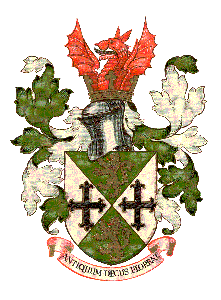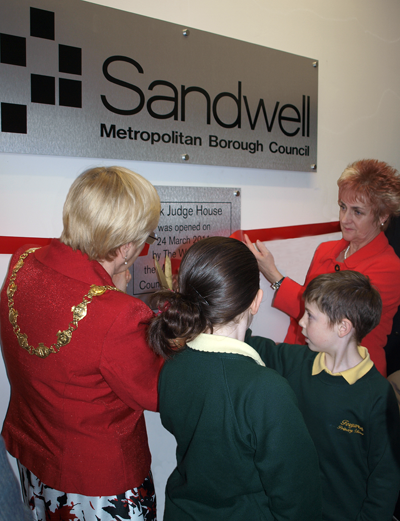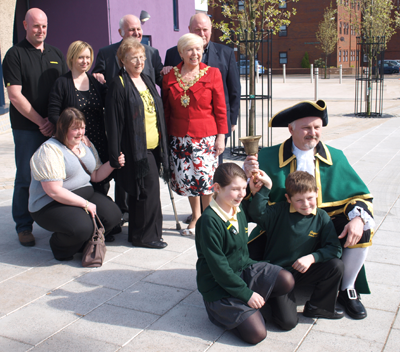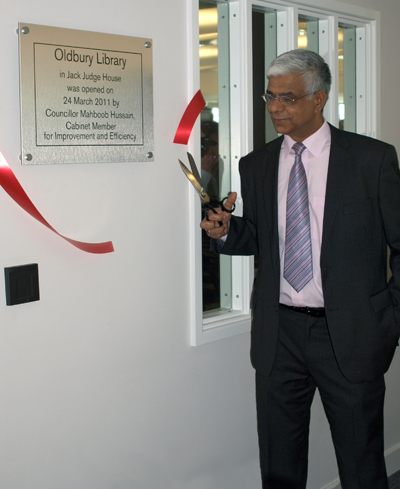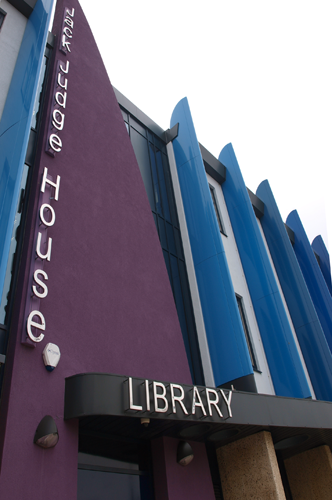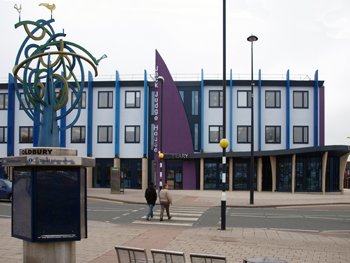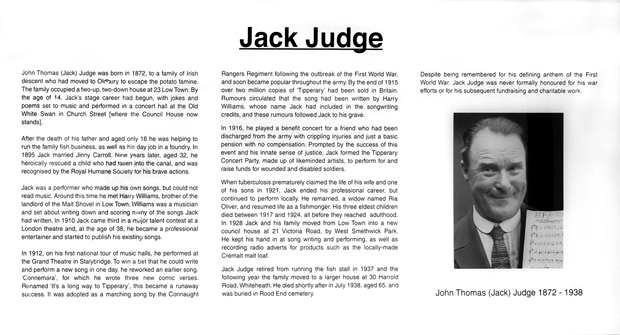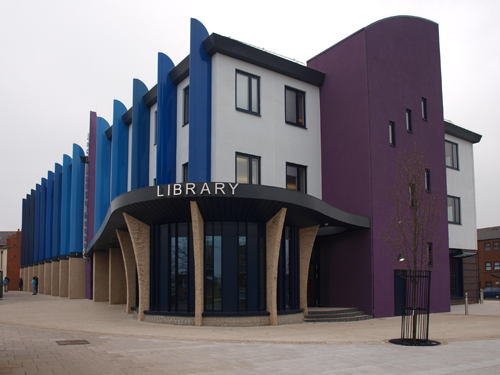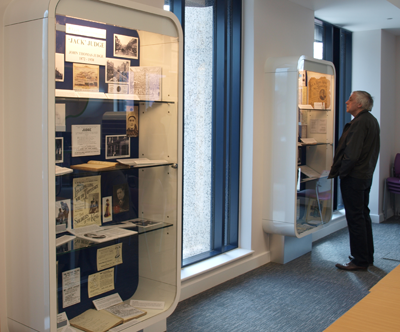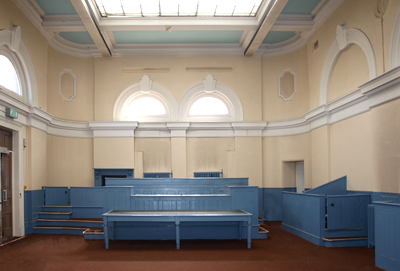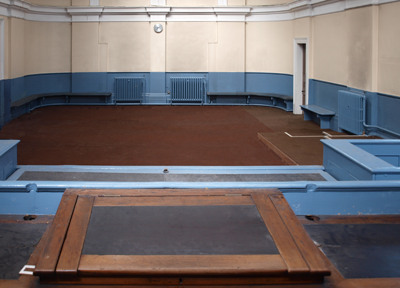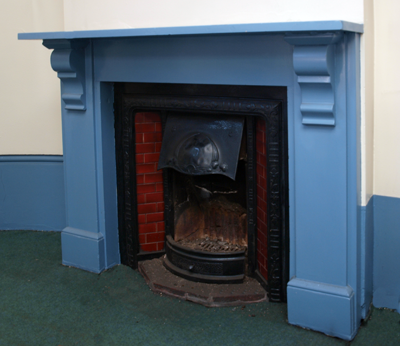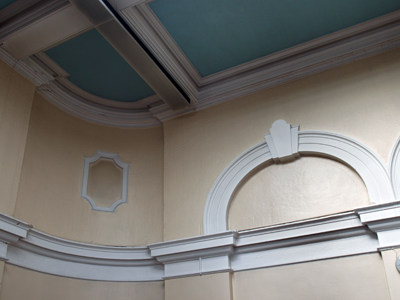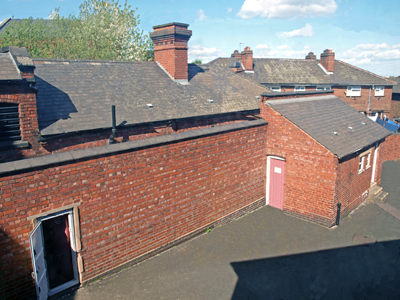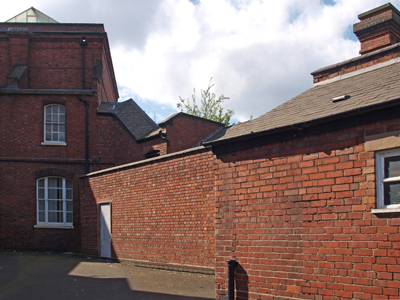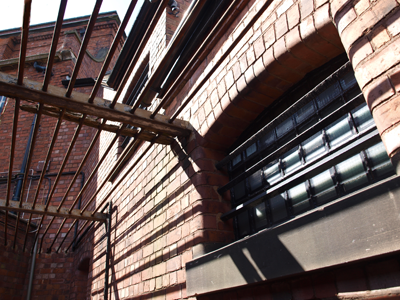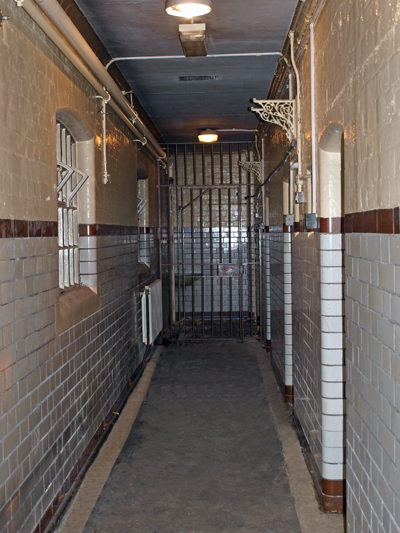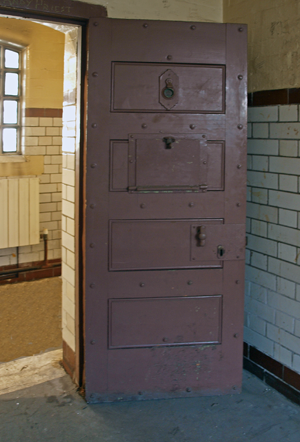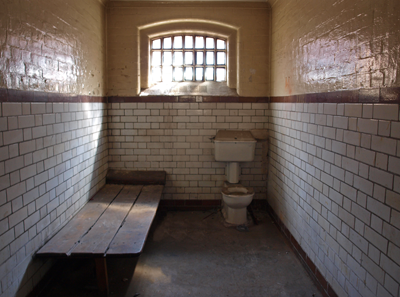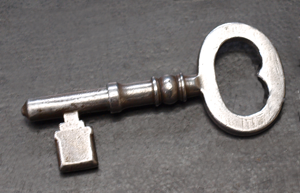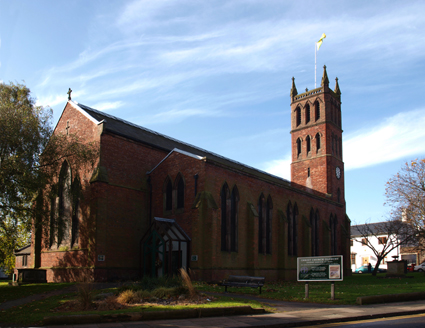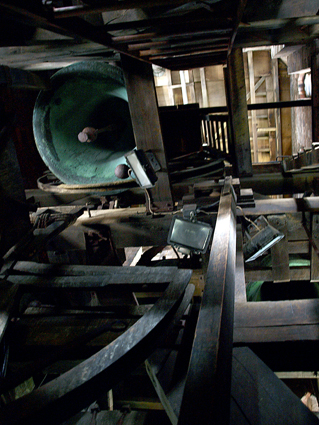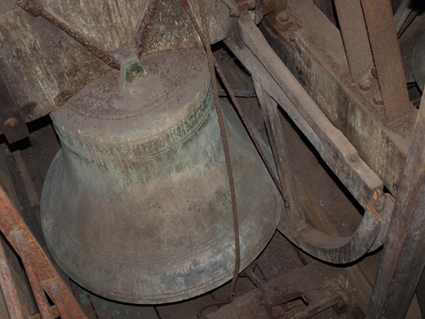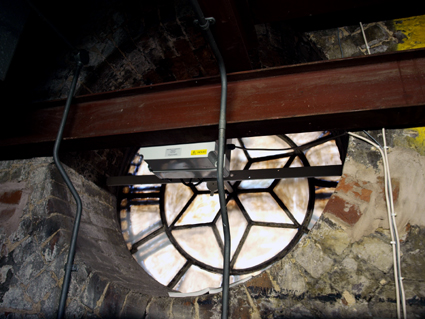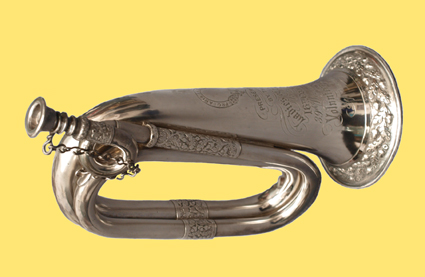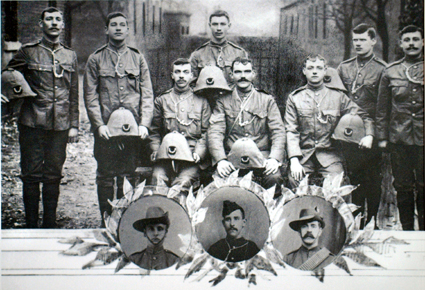|
History
of Oldbury, Langley and Warley
|
||
|
Communities
of the West Midlands
|
||
|
The
website of Langley Local History Society - Oldbury Local History
Group - Old Warley Local History Society
|
||
 |
||
| HOME | |
| NEWS & EVENTS | |
| ....Old News | |
| OLDBURY HISTORY | |
| HISTORY SOCIETIES | |
| PUBLICATIONS | |
| GALLERY | |
| QUESTIONS | |
| LINKS | |
| CONTACT US |
|
OLD
NEWS
|
|
Although out of date as 'news', these items are retained on the website because of the information they contain.
|
The new building in Halesowen Street, Oldbury, comprises council offices and a new library for Oldbury. It is built on the site of shops that were bombed in WW2 or demolished in the 1970s, and, for a while, the location of Oldbury bus station.
The building is named after John Thomas Judge, 'Jack', Judge, born into an Irish family living in Low Town in December 1872. Jack became a local entertainer, and later toured the country as a variety artist, singing, whistling and telling jokes - a typical act of the time. Jack's name is known worldwide as the composer of 'Its a long, long way to Tipperary', a song that became famous when it was taken up by Allied soldiers in WW1.
Apart from a bench near the Council House, this building is the first significant public recognition of Jack Judge in his home town. The entrance to the building includes a plaque with a short biography of Jack and a picture of him.
The new library has a large meeting room with exhibition cases for displaying items on the history of Oldbury, Langley and Warley. Exhibitions will be arranged by the local history societies in the area: the first exhibition features Jack Judge. This room will become the new home for Oldbury Local History Group, whose meetings are at 2.45 on the third Tuesday of each month.
Article on the Life and Music of Jack Judge
|
|||||||||||||||||||||||||||||||||||||||||||||||||
|
|
|
On the evening of 8th September 2009 fire broke out in the derelict Maltings in Western Road, Langley. Half of the roof of the grade two listed building was destroyed before the fire was put out, and three of its characteristic outlet towers were destroyed. So, another iconic building in the history of Oldbury is damaged or lost. The maltings were erected by Walter Showell around 1880 on the side of the Titford Canal to supply malt to his new 'Crosswells Brewery' a hundred yards away across the railway line. This was one of the largest breweries in the area, and Showell's Ales were distributed throughout the Midlands. Local barley was used in the malting process, supplemented with grain brought in by barge and, later, by railway. Malting ceased in 2006, and the building was sold by its owners,Wolverhampton and Dudley Breweries, in 2007, since when it has been allowed to deteriorate. It was one of the last maltings to still use the traditional 'floor' malting process: the grains of barley were steeped in water and then spread over the floor of the maltings, the mass being frequently turned to permit even germination. At the end of the twentieth century, there were only five maltings in the country still using this process. It is a striking building, rising from the side of the canal, the water at the base of its walls, and a feature of the canal walk from Oldbury locks to Titford Pool. This was not its first major fire. On 25th September 1925 the maltings caught fire and half of the building destroyed. Added hazards in 1925 were the location of the Shell-Mex petroleum tanks next to the maltings, and tar wagons in the railway yard opposite: both long since gone. On that occasion,the maltings were part of a commercially successful operation, and were quickly rebuilt. Their future now is much less certain, but it is to be hoped that they can be retained and a new use found for them.
|
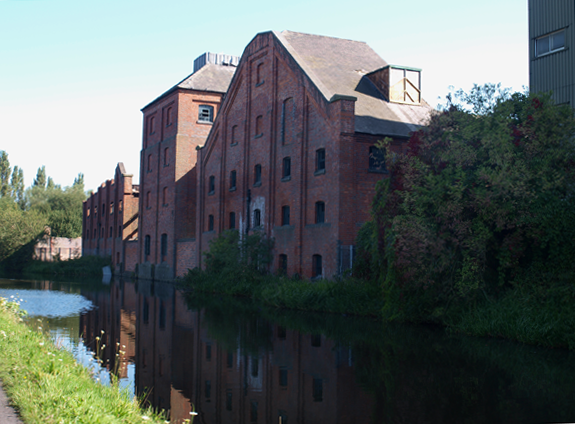 |
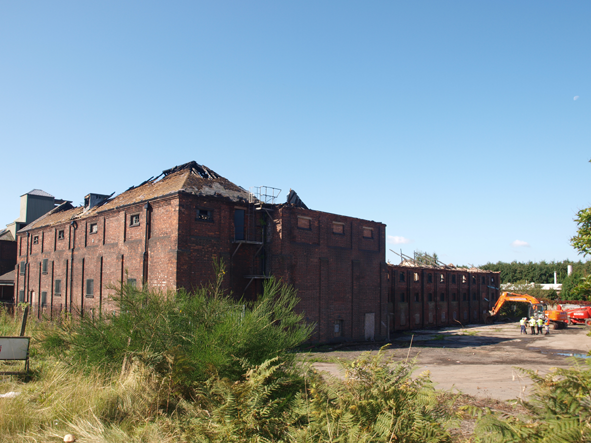 |
|
| The maltings today | ||
 |
||
|
Inspecting the scene after the fire, 10th September 2009 |
Photos: Dr Terry Daniels | |
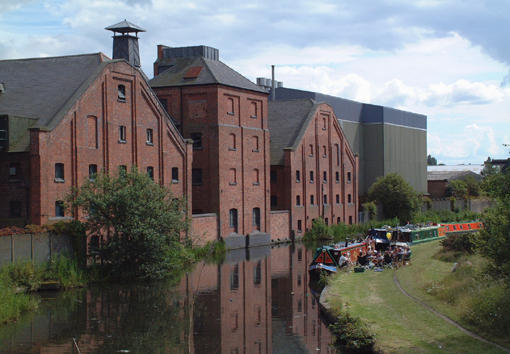 |
||
| Happier times - a picnic in front of the maltings at a recent BCN Rally | Photo: Dr Terry Daniels | |
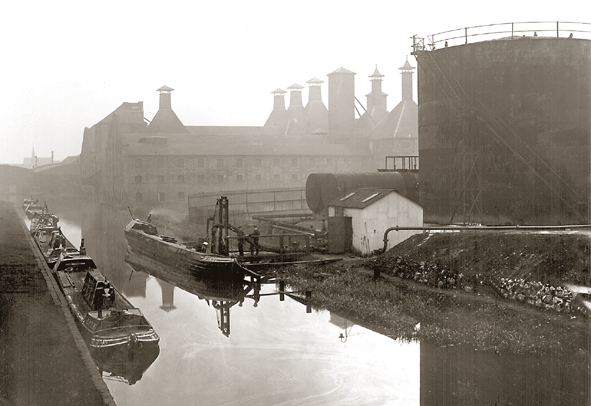 |
||
|
The maltings and the Shell-Mex storage tanks in the 1920s, before the first fire |
||
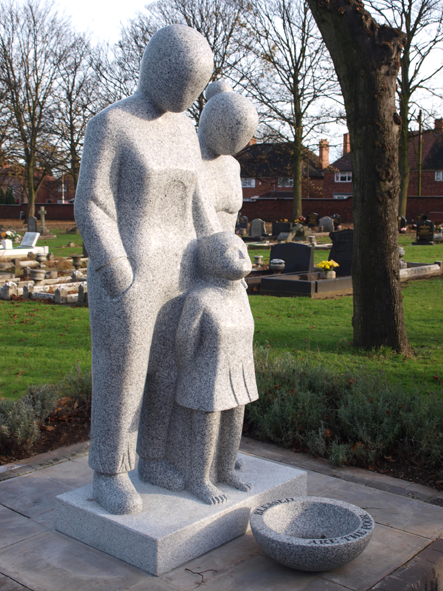 |
On an otherwise cold and grey day, weak sunlight greeted the unveiling of the Pauper Memorial in Heath Lane Cemetery, West Bromwich on Friday 21st November 2008. It was symbolic of the light and warmth they seldom found in life once the stigma of poverty and pauperism had struck them. Why is this relevant to Oldbury? The pauper buried in unmarked graves were those from the workhouse for the West Bromwich Poor Law Union, which included Oldbury, Langley and Warley. Some of the paupers will have come from Oldbury. The memorial at last gives recogition to the hundreds interred in the green spaces of the cemetery - it was illegal to add a headstone to a pauper's grave. It has been carved in grey granite in India, and shows a pauper family, the father and mother bowed down, but the child looking up, perhaps in hope. It is estimated that 2,500 paupers are interred in the cemetery, many of them in mass graves, but there are no records of who was buried in any particular plot. The memorial will provide a focus for those wishing to pay their respects. More information: www.westbrompaupers.org.uk |
||
 |
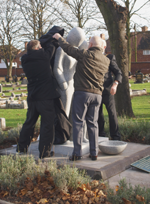 |
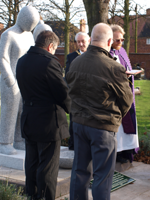 |
|
| These photographs show Professor Carl Chinn addressing the crowd before the unveiling, the unveiling by Carl Chinn and the Mayor of Sandwell, Cllr Bob Price, and the blessing of the memorial by the Vicar of All Saints Church, West Bromwich. ----------- ----------------------[Photographs: Terry Daniels] | |||
| Top of Page | |||
|
|
|||
|
THE BELLS WILL RING OUT Note: there is a more detailed article on Christchurch Clock and Bells on the main website, together with a recording of the bells at their opening ceremony after restoration.
|
||
|
|
You
may have noticed that the clock in the
New striking mechanisms have been
added now to all of the eight bells so that the bells can be rung
electonically for local and national celebrations, and strike the
The peal of eight bells was originally installed in 1887 to mark Queen Victoria's Golden Jubilee following generous donations of the eight bells and a public subscription which raised £320 for the work, The tower had to be raised by 16 feet (5 metres) to accommodate the bell chamber, which is why the brickwork for the top section of the tower does not match that of the lower part. The bells were originally swung from a ringing chamber below the bell chamber, but, following the alterations to the church in the 1990s, this area now houses the central heating for the building, and the tower is deemed to be too weak to swing the bells anyway. A
clock was installed four years later which struck the hours and
played the |
|
|
|
||
|
The inside of the tower showing the No 7 bell |
Tenor bell showing the mechanism for swinging the bell and the original striking mechanism for the 1890 clock. |
The original clockface and the recently installed clock mechanism.
Photographs: Terry Daniels, October 2008 |
|
|
||
|
|
||
|
THE
WORCESTERSHIRE REGIMENTAL MUSEUM |
|
|
Members of Langley
Local History Society visited the The story of the Oldbury Volunteers is available as an Adobe Acrobat file. The museum traces the history of the regiment from its inception as the Farrington's Regiment of Foot in 1694 to the latest action of the Worcestershire and Sherwood Foresters Regiment. Members of the society were impressed by the displays and recommend a visit. The Worcestershire
Regiment Museum
is open Monday to Saturday at The Worcester City Museum and
The Bugle presented to the Oldbury Volunteers by the Ladies of Oldbury in 1860 |
Oldbury Volunteers who served in the Boer War 1900-1901
A volunteer's uniform from the 1880s Photographs: Terry Daniels, 2008 |
|
|
|
|
FACING
DEMOLITION - ST MICHAEL AND ALL ANGELS, LANGLEY |
|
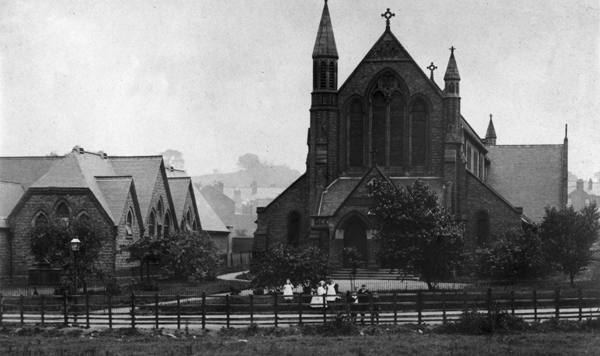 |
The The Birmingham
Diocese has been unable to find a purchaser for the building to
date, and it is now likely that the building, at the heart of the
The building contains
many interesting features, including a Nicolson organ, tablets and
memorial stones to leaders of the One is a fine
window dedicated to Gladys Pryor, the daughter of the Vicar, who
died at the age of twelve in 1900. This was made by the Camm studio
in The east window
contains a fine crucifixion panel showing Mary, Of particular
concern are the two war memorial windows commemorating the dead
of Langley Local History Society accepts that the closure of such buildings may be inevitable when they are no longer viable, and takes no view on the decision for closure itself. It is concerned, however, that the historic fabric is preserved and adequately protected during the period when the building is not in use, and suitably re-sited following any decision to demolish the building.
Colour photographs: Dr Terry Daniels, 2005 |
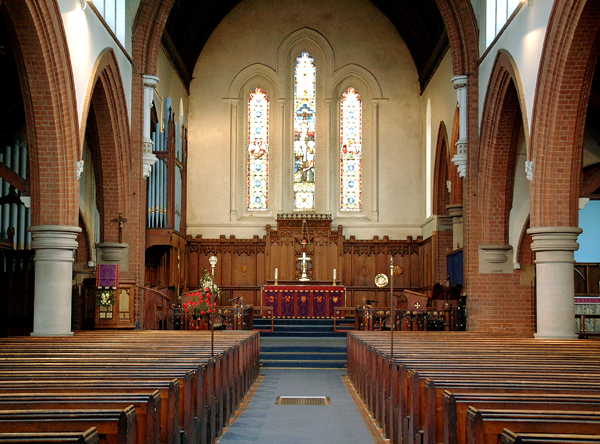 |
|
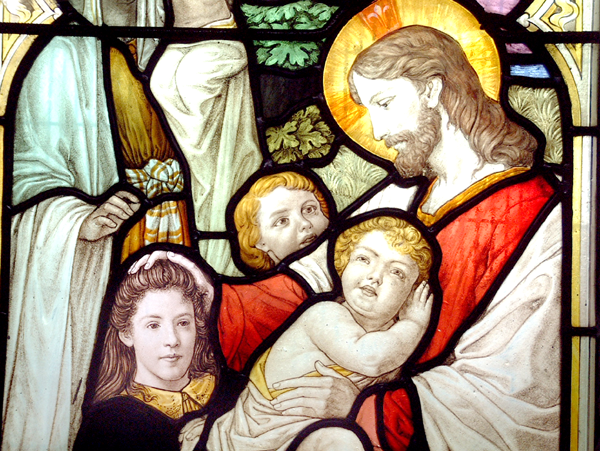 |
|
|
St Michael's Church and Schools, 1900s The nave and sanctuary of St Michael and All Angels Church Detail of the Gladys Pryor window The Langley War Memorial window |
|
|
|
|
|
DEMOLISHED - THE MORTUARY CHAPEL IN ROOD END CEMETERY
|
|
|
The
remaining mortuary chapel in Langley Local History Society did manage to save a blue, a red and a yellow brick from the chapel, and two souvenirs, the carved faces of a man and a woman which were sited on the outside of the east window. These were blackened after 150 years in Oldbury's industrial atmosphere, and slightly damaged on removal, but they will be restored as a reminder of the old mortuary chapels.
|
|
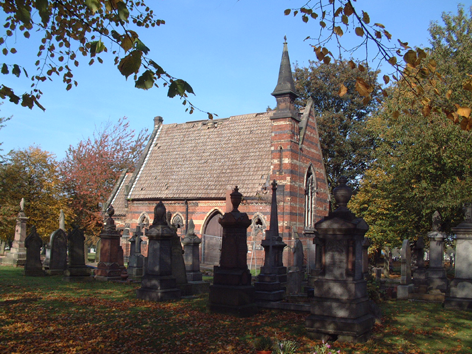 |
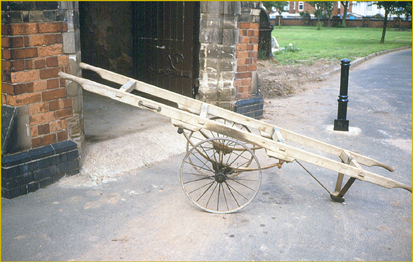 |
|
The chapel awaiting demolition, autumn 2007 [Photo: Terry Daniels] |
-Coffin carrier used in the cemetery in former times [Photo: Janet Smith] |
|
|
|
|
©
2008 The Local History Societies of Langley, Oldbury and Warley
|
